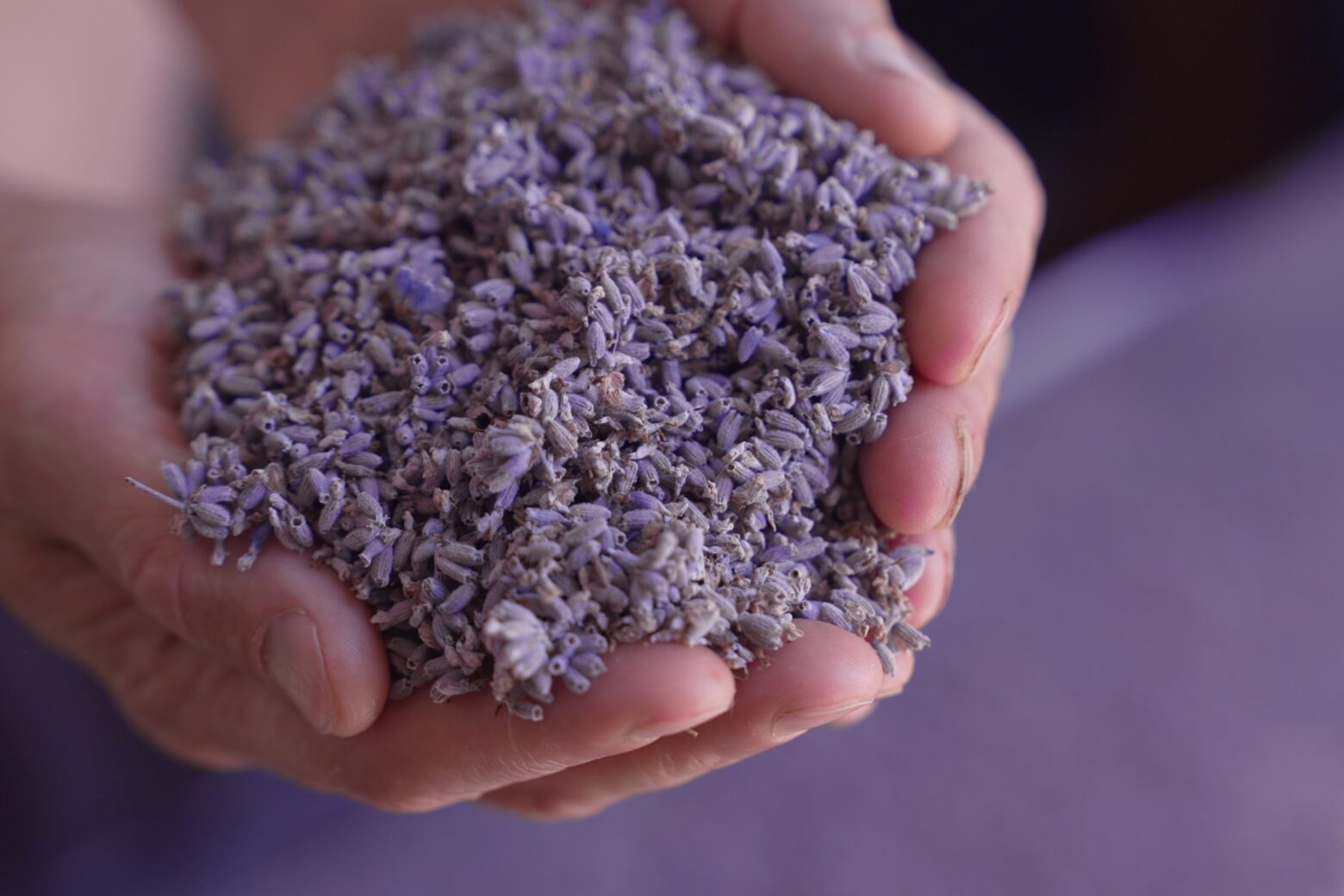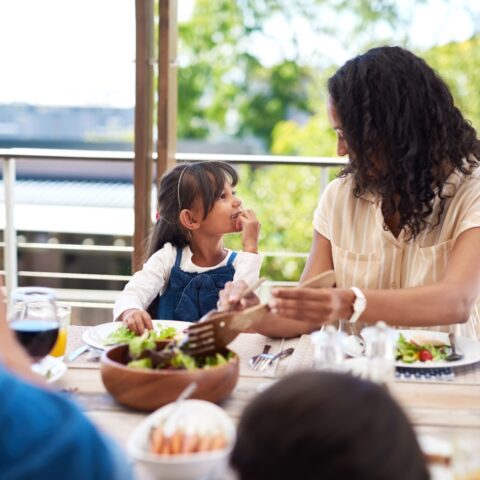The Health Benefits of Lavender and How to Use It in Your Kitchen

You’ve probably seen lavender in bath bombs, candles, or tucked inside a sleep sachet—but did you know this fragrant purple flower also deserves a spot in your kitchen?
Culinary lavender isn’t just pretty and soothing; it’s packed with plant compounds that may help ease stress, support better sleep, and even reduce inflammation. And when used the right way, it adds a delicate, slightly citrusy flavor to everything from tea and honey to roasted veggies and baked treats.
Wondering how to cook with lavender—and why you might want to? Let’s dig into the science-backed benefits and simple ways to make the most of this floral powerhouse.
What Exactly Is Lavender?
Lavender refers to a group of flowering plants in the Lavandula genus, part of the mint family (Lamiaceae). Native to the Mediterranean region, it thrives in dry, sunny climates and is cultivated globally for its ornamental beauty, fragrance, and therapeutic potential.
Among the more than 45 species, Lavandula angustifolia, also known as English lavender, is commonly used for culinary and herbal purposes. Its sweeter, less perfumy flavor makes it suited to food preparation.1-3
The edible part of the plant is the flower, which can be used fresh or dried. Lavender buds contain essential oils rich in linalool and linalyl acetate, compounds studied for their calming, anti-inflammatory, and antioxidant properties. While the leaves are technically edible, they tend to be bitter and are used far less often in recipes.4,5
Science-Backed Health Benefits of Lavender
Lavender has long been used in traditional medicine for its soothing scent and therapeutic effects. Today, a growing body of research suggests this aromatic herb may support well-being in several meaningful ways—from easing anxiety to improving sleep and calming inflammation.
Eases Stress and Anxiety
Lavender is best known for its calming effects. Both oral supplements and aromatherapy have been shown to reduce anxiety in clinical trials. One systematic review found that lavender oil capsules may significantly reduce symptoms of generalized anxiety.6
Lavender aromatherapy has also been shown to reduce self-reported stress levels in various settings—from hospital waiting rooms to everyday life.7,8
RELATED: Summer Simmer Pot Recipe
Supports Better Sleep
Lavender is frequently used to support better sleep. Research shows that inhaling lavender oil before bed or wearing a lavender-scented patch can help people fall asleep faster and stay asleep longer. This may be especially helpful for those whose sleep disturbances are stress related.9,10
May Relieve Headaches
Some small studies suggest that inhaling lavender essential oil may help reduce headache severity and even prevent migraines. In one trial, people with migraines experienced fewer and less severe headaches after three months of lavender use.11
Has Anti-Inflammatory Properties
Animal and in vitro studies indicate that lavender oil can suppress the production of pro-inflammatory compounds, likely due to active ingredients like linalool and linalyl acetate.12 This may help give relief for skin issues like eczema, psoriasis, and rashes. More human studies are needed, but early research supports its traditional anti-inflammatory reputation.
May Support Women’s Hormonal Health
Lavender may offer support for menstrual or menopausal symptoms. Inhaling lavender or using it during aromatherapy massage has been linked to reduced menstrual cramps. A small trial also found that postmenopausal women taking lavender oil capsules reported improvements in sexual dysfunction and other symptoms.13,14
How to Select and Store Culinary Lavender
When cooking with lavender, always choose culinary-grade varieties, such as Lavandula angustifolia. This variety is sweeter, lower in essential oil content, and free from chemicals or pesticides often used in ornamental plants. Look for products labeled certified organic and culinary grade.
If you’re interested in growing your own, lavender thrives in well-drained soil and full sun. Once established, it’s low-maintenance and drought-tolerant. Pruning encourages more flowers, which is ideal for culinary use.
Storage Tips
- Dried: Keep in an airtight container away from heat, light, and moisture. Best used within 6 months.
- Fresh: Store in the refrigerator. Wrap loosely in a damp towel or place upright in water (like fresh herbs) for several days of freshness.
Cooking with Lavender
Culinary lavender brings a soft floral note to dishes, but a little goes a long way. Dried lavender is about three times as potent as fresh, so start small when cooking with it, unless a recipe specifies the form.15
Lavender is especially popular in baked goods and beverages. Try steeping it in coconut cream or nut milk for infused desserts like panna cotta or ice cream. It also makes a lovely addition to lemonades, mocktails, or meringues. Lavender pairs beautifully with bright flavors like lemon, which help balance its earthy depth.
In savory cooking, lavender is a classic ingredient in herbes de Provence, often paired with rosemary, thyme, and marjoram. It adds lift and contrast to rich dishes like roasted chicken, lamb, or salmon. One delicious trick: briefly fry dried lavender buds in coconut oil to mellow the flavor, then drizzle over roasted vegetables for a floral twist.
Whether you’re baking grain-free scones or searing salmon, culinary lavender adds aromatic complexity—just remember to use it with a light touch.
Resources
- NCCIH. (2020, August). Lavender. NCCIH. https://www.nccih.nih.gov/health/lavender
- (2025). Bbfamilyfarm.com. https://www.bbfamilyfarm.com/what-kind-of-lavender-can-you-eat/
- Lavandula angustifolia – Plant Finder. (2025). Missouribotanicalgarden.org. https://www.missouribotanicalgarden.org/PlantFinder/PlantFinderDetails.aspx?gen=Lavandula&isprofile=1&taxonid=281393
- But, V., Adriana Elena Bulboacă, Rus, V., Tamás Ilyés, Gherman, L.-M., & Bolboacă, S. D. (2023). Anti-inflammatory and antioxidant efficacy of lavender oil in experimentally induced thrombosis. Thrombosis Journal, 21(1). https://thrombosisjournal.biomedcentral.com/articles/10.1186/s12959-023-00516-0
- Shamabadi, A., Alireza Hasanzadeh, Ahmadzade, A., Ghadimi, H., Gholami, M., & Shahin Akhondzadeh. (2023). An Overview of Systematic Reviews of the Anxiolytic Effects of Lavandula angustifolia (lavender). 40, 100672–100672. https://www.sciencedirect.com/science/article/abs/pii/S2210803323000507?via%3Dihub
- Hugar, S. M., Gokhale, N., Uppin, C., Kajjari, S., Meharwade, P., & Joshi, R. S. (2022). The Effects of Lavender Essential Oil and its Clinical Implications in Dentistry: A Review. International Journal of Clinical Pediatric Dentistry, 15(3), 385–388. https://www.ijcpd.com/doi/pdf/10.5005/jp-journals-10005-2378
- Donelli, D., Antonelli, M., Bellinazzi, C., Gensini, G. F., & Firenzuoli, F. (2019). Effects of lavender on anxiety: A systematic review and meta-analysis. Phytomedicine, 65, 153099. https://www.sciencedirect.com/science/article/pii/S0944711319303411?via%3Dihub
- Kim, M., Nam, E. S., Lee, Y., & Kang, H.-J. (2021). Effects of lavender on anxiety, depression and physiologic parameters: Systematic Review and Meta-Analysis. Asian Nursing Research, 15(5). https://www.asian-nursingresearch.com/article/S1976-1317(21)00077-3/fulltext
- Lillehei, A. S., Halcón, L. L., Savik, K., & Reis, R. (2015). Effect of Inhaled Lavender and Sleep Hygiene on Self-Reported Sleep Issues: A Randomized Controlled Trial. The Journal of Alternative and Complementary Medicine, 21(7), 430–438. https://www.liebertpub.com/doi/10.1089/acm.2014.0327
- Yogi, W., Tsukada, M., Sato, Y., Izuno, T., Inoue, T., Tsunokawa, Y., Okumo, T., Hisamitsu, T., & Sunagawa, M. (2021). Influences of Lavender Essential Oil Inhalation on Stress Responses during Short-Duration Sleep Cycles: A Pilot Study. Healthcare, 9(7), 909. https://www.mdpi.com/2227-9032/9/7/909
- Nasiri, M., Asayesh, H., Yousefi Khosroabadi, Z., Hosseini Amiri, M., Bahadori, H., & Rajaee, M. (2022). Effects of Aromatherapy with Lavender (Lavandula angustifolia MILL) on Post-Dural Puncture Headache: A Randomized Placebo-Controlled Trial. Alternative Therapies in Health and Medicine, 28(5), 12–19. https://pubmed.ncbi.nlm.nih.gov/33245709/
- Pandur, E., Balatinácz, A., Micalizzi, G., Mondello, L., Horváth, A., Sipos, K., & Horváth, G. (2021). Anti-inflammatory effect of lavender (Lavandula angustifolia Mill.) essential oil prepared during different plant phenophases on THP-1 macrophages. BMC Complementary Medicine and Therapies, 21(1). https://bmccomplementmedtherapies.biomedcentral.com/articles/10.1186/s12906-021-03461-5
- Karimollahi, M., Nikjou, R., Kazemzadeh, R., Rostamnegad, M., Moshfegi, S., & Salehi, H. (2016). The effect of lavender aromatherapy on the pain severity of primary dysmenorrhea: A triple-blind randomized clinical trial. Annals of Medical and Health Sciences Research, 6(4), 211. https://pmc.ncbi.nlm.nih.gov/articles/PMC5405632/
- Froozan Bakhtshirin, Abedi, S., Parisa YusefiZoj, & Damoon Razmjooee. (2015). The effect of aromatherapy massage with lavender oil on severity of primary dysmenorrhea in Arsanjan students. Iranian Journal of Nursing and Midwifery Research, 20(1), 156. https://pmc.ncbi.nlm.nih.gov/articles/PMC4325408/
- Perry, D. (n.d.). How to Cook With Lavender so Your Food Doesn’t Taste Like Soap. Bon Appétit. https://www.bonappetit.com/test-kitchen/how-to/article/cooking-with-lavender
Maureen Farrar
Maureen Farrar has spent more than 20 years as a writer and editor for several print and digital outlets. She writes about health, fitness and nutrition.
More About The Author




